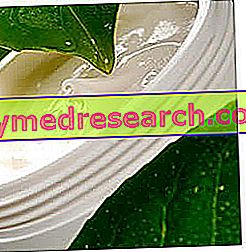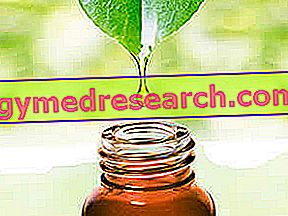
Reasoned definition of natural cosmetic
It is known that the use of plants or natural derivatives, in the preparation of products intended for topical application, has accompanied human civilization for centuries. After all, the plant world represents an inexhaustible source of raw materials which, transformed with appropriate processes, find various applications in the dermo-cosmetic field, both as functional substances and as excipients or carriers.

A natural cosmetic is, in our opinion, a product consisting mainly of natural ingredients (obtained and used as such or which have undergone only physical transformation processes) and ingredients of natural origin, but without, or containing very limited concentrations of substances considered - by scientific studies and by professionals of the sector - little eudermic or not easily biodegradable, such as silicone derivatives, acrylates, ethoxylated or petrochemical molecules.
Advantages and disadvantages of Natural Cosmetics
Let's start from the assumption that
opinions on cosmetics that do not meet the requirements of naturalness are often misleading and filled with prejudices, gross errors and obviousness spread by subjects who boast of skills and qualifications never reached, but which are often dangerous, triggering tam-tam telematics that rely on an audience that has no chemical or dermatological skills and is led to think that everything that is "synthetic" is harmful to one's skin and "poisons" the planet.
It is also true that communication in the opposite direction is often studded with unclear and impractical information and terminology, thus forcing the consumer to lay down his arms, renouncing the will to understand a more technical language and deciding, with a closed box, to go the road less tortuous and dangerous for itself and the environment. It is no coincidence, therefore, that sales of natural cosmetics continue to record a positive trend despite the crisis in consumption which has negatively influenced the general trend of the market. Faced with the growing demand for this type of cosmetics, it would be advisable to be able to offer consumers who are attentive to their health and sensitive to environmental problems, products that are more closely monitored and regulated by control bodies, to avoid the spread of deceptive advertising messages that claim a "Naturalness" of the almost non-existent product, the so-called "green washing". It would also be important for the institutions to contribute to the knowledge of the sector by making it clear that the term "synthetic chemical" is not synonymous with "harmful" or "irritant", and that the cosmetic is a complex matrix and, as such, should be judged in all of its components, in the concentration ratios and in the dosage of the ingredients considered "critical" in terms of biodegradability, in verifying the tolerability and the efficacy of the finished product. This would help to prevent the conventional cosmetic from being confused with a mixture of artificial and potentially toxic substances mixed together for the sole purpose of obtaining a pleasant texture, at low costs and with contained formulation efforts.
Given this premise, the critical issues in the creation of a cosmetic that meets naturalness requirements are very numerous and represent a demanding challenge for the formulator who would like to be able to offer the consumer similar performance and the same pleasantness as conventional cosmetics. After all, the sensoriality of the cosmetic also consisting of synthetic molecules, which exploits the silkiness of a silicone touch or the powdery effect of a texturizing acrylic polymer, are not comparable to those of natural cosmetics, although it is desirable that recent developments of the market, with the entry of leading brands in large distribution of natural cosmetic lines, can encourage the producers of raw materials to invest in the search for natural raw materials, to overcome formulation limits that can be found in the realization of certain types of products, providing new opportunities for the formulator.
Beyond the texture, in the field of detergency, foam lovers who approach "natural" formulations, could hardly adapt to the use of detergents formulated with delicate and low-pollutant tensides but that develop little foam in contact with water. For those who then have curly and voluminous hair, the untangling of hair with balsams lacking conditioning surfactants such as Cetrimonium Chloride or poliquaternium, non-biodegradable and ichthyotoxic, but certainly effective, could be a strenuous operation.
One of the major problems of natural cosmetic is its conservation : synthetic preservatives are generally more powerful, effective and economical than natural molecules. In recent years the search for new natural substances has undergone a considerable increase and there are attempts to replace synthetic preservatives with essential oils or other plant molecules with bacteriostatic activity. Recently the practice of mixing different natural substances to spread the spectrum has been widespread, appropriately dosed and formulated at the appropriate pH. The results obtained are discrete, even if the problem of microbial preservation of natural cosmetic formulations is not completely resolved. Often high amounts of ethyl alcohol are used which, despite its "naturalness", can be irritating, especially if applied to sensitive skin, or a packaging is used that guarantees greater protection from microbial contamination. compared to traditional vases or bottles, as airless or single-dose containers, with the possibility of using smaller dosages of preservatives in natural cosmetics.
Continue: disadvantages and advantages of natural cosmetics »



